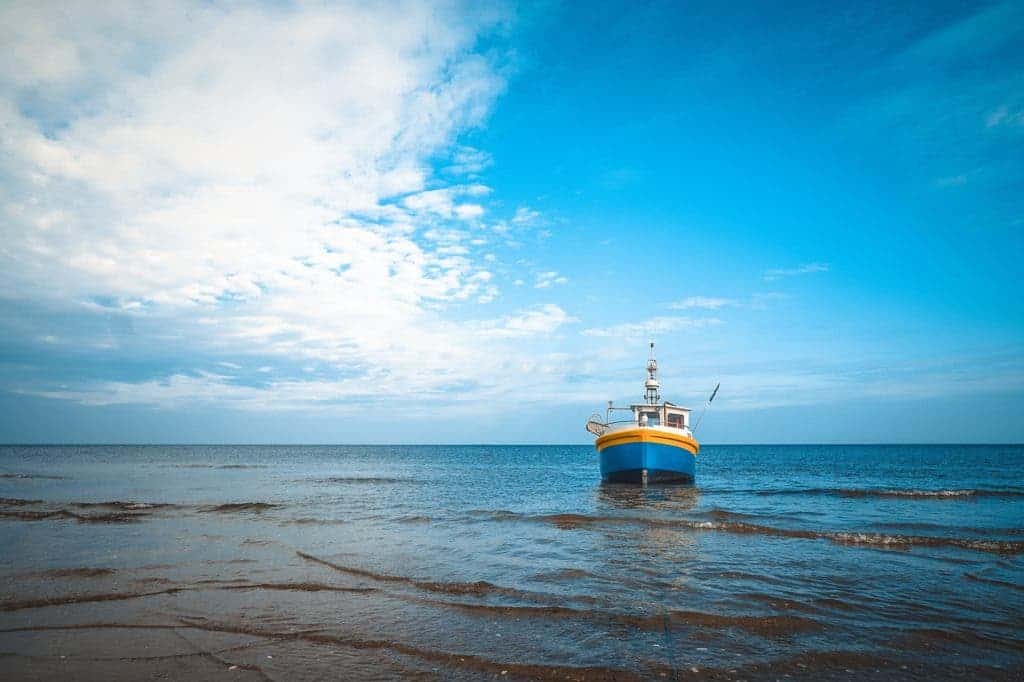New research at the University of Delaware (UD) reports that climate fluctuations are impacting the fishing industry in New England — and costing people their jobs.
Overexploitation of marine resources has, traditionally, been the plague of the fishing industry. But this is not the only threat it’s facing today. Researchers at the UD report that changing climate patterns are impacting Atlantic fish populations, which in turn affects jobs in the New England fishing industry.

“As we see more warm winters off the New England coast, historic fisheries decline and fewer fishermen stay in business,” says Kimberly Oremus, assistant professor of marine policy. “This has important implications for fisheries management in New England, which employs 20% of U.S. commercial harvesters.”
The team correlated the North Atlantic Oscillation (NAO), one of the most important climate fluctuations in the North Atlantic, with labor numbers in New England. They found that climate fluctuations have caused a 16% drop in fishing sector jobs in the area from 1996 to 2017. There are around 34,000 commercial marine fishermen in New England, the paper notes.
Previous research has used temperature projections as a gauge for climate change. The current paper relied on the North Atlantic Oscillation instead, a climate index based on differences in air pressure (at sea level) between the Azores and Iceland. The NAO index measures the difference in pressure between the subtropical high in the Azores (warm air) and the subpolar low near Greenland (cold air). When it’s high, the northeastern U.S. will experience a warmer winter pattern. When the NAO index is low, cold winters are more likely.
The waters around New England are among the fastest-warming in the world, according to the team. Warmer waters in any given year translate to lower catch (and thus, job) numbers a few years later as fish development is impacted by environmental conditions.
“Warmer-than-average sea-surface temperatures have been shown to impact the productivity of lobsters, sea scallops, groundfish and other fisheries important to the region, especially when they are most vulnerable, from spawning through their first year of life,” Oremus explains.
In order to understand how changes in the NAO index affects catch numbers, the study gathered catch-size restrictions in effect for 56 commercial fisheries. Squid and some shrimp, for example, are typically caught in their first year of life, while most groundfish, such as haddock, are caught between 2-4 years old; the majority of fish are caught by age 6. The team then compared NAO indexes to aggregated catch figures from multiple fisheries, the resulting impact on revenue, and how this impacted the number of fishing jobs and their wages.
Increases in the NAO signal reduce total catches in New England by 2% per year for up to 5 years (and a 10% total reduction in fish catches). A 1-unit increase in the oscillation reduced commercial fishing revenue by 1% initially, accumulating to a 13% decline over six years. As revenues fall, so does the demand for labor — a 1-unit decline in the NAO index reduced fishing employment by 13% and wages by 35% for several years.
So far, from looking at permit data from all federal commercial fishing permits on the U.S. Atlantic coast, the authors found no evidence that fishermen are moving farther south where fish stocks are more stable (due to them being a mix of warm- and cold-water species).
“The science on this particular climate variability–the North Atlantic Oscillation–is very well established,” Oremus said. “But how will it change in the future?”
“There are two predictions: some say it is moving more into the positive phase, and some are predicting it will be more variable.”
The findings, she says, suggest that fish populations in the area will be impacted either way.
The paper “Climate variability reduces employment in New England fisheries, Proceedings of the National Academy of Sciences” has been published in the journal Proceedings of the National Academy of Sciences.


